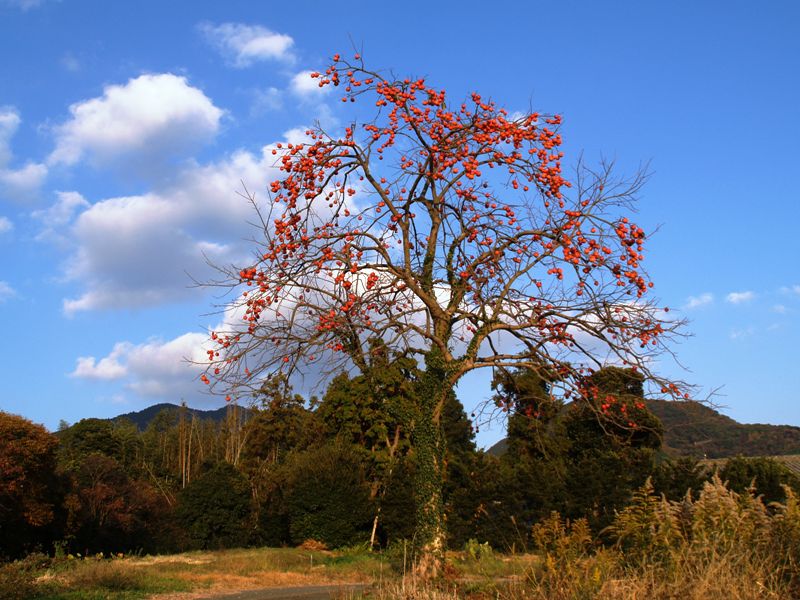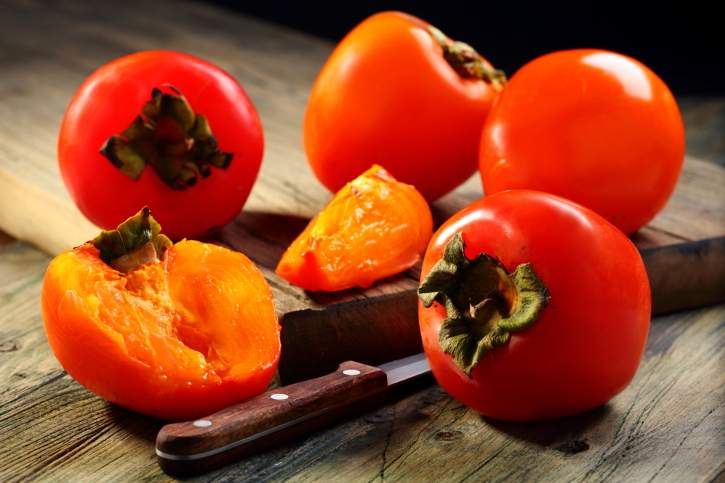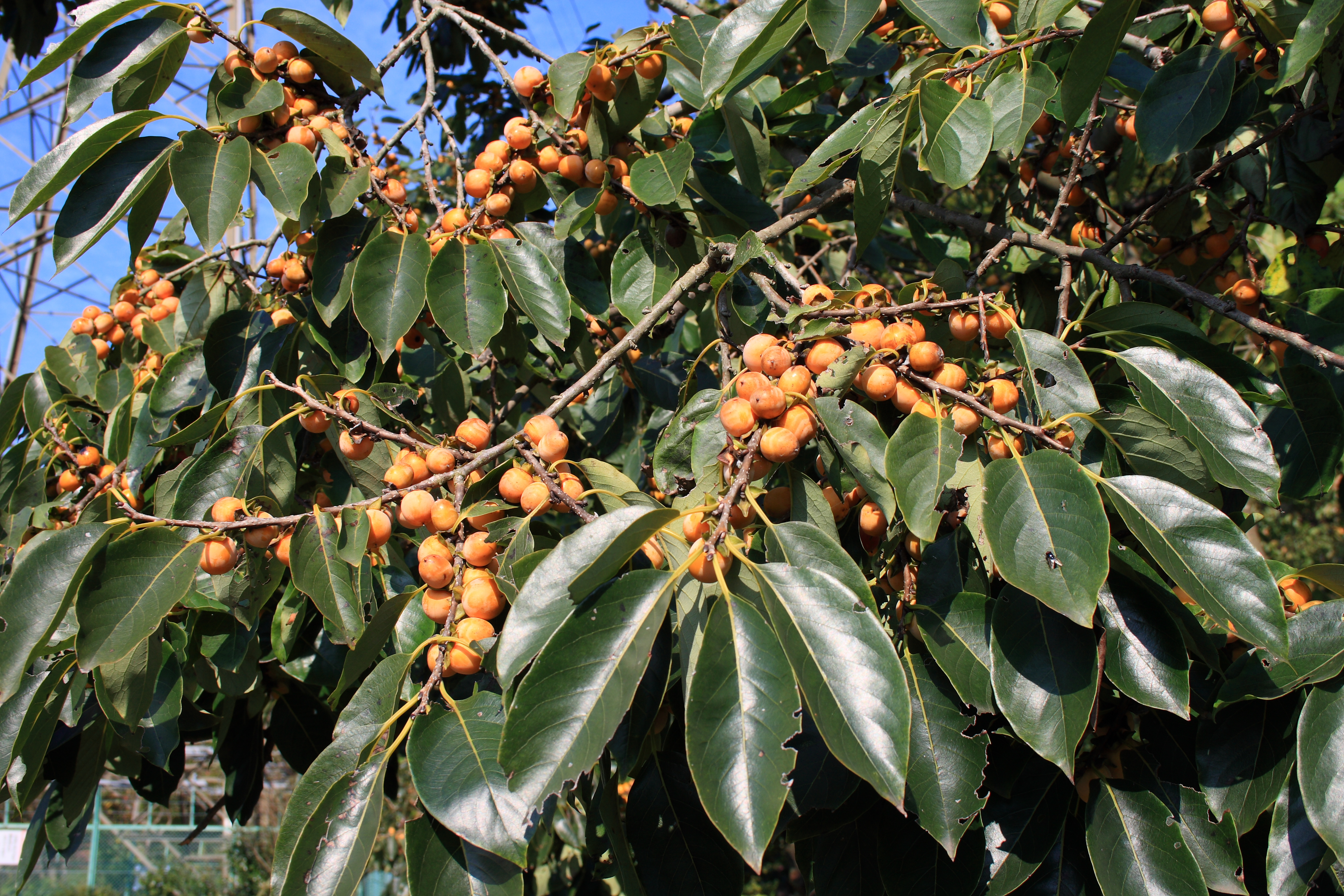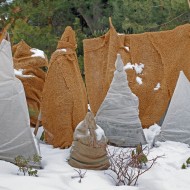Persimmon tree in Russian gardening: tips and tricks for growing
Content
Distribution area
For its sweet taste and appearance in our country, persimmon was nicknamed the tomato tree. Hundreds of its species grow in the world. The tree grows and bears fruit for up to 500 years!
In the wild, persimmon still comes across in the mountainous regions of Indochina, but its range is in countries with a subtropical climate. The tree does not like overly cold winters and overly hot summers. A drop in temperature to -18 ° C can be detrimental to the plant.

They began to grow persimmon in Manchuria, from where it gradually expanded to Southeast and South Asia. Today the plant is cultivated in the following countries:
- Italy;
- Spain;
- Turkey;
- Iran;
- Brazil;
- Mexico;
- New Zealand;
- Japan.
In our country, persimmon took root in the Kuban and Krasnodar regions, as well as in the Caucasus. Thanks to the frost-resistant varieties bred by Russian breeders (they can withstand temperatures down to -20 ° C), the culture has spread in the Rostov region. Fruits grown in Abkhazia and Ossetia, in the Crimea and Georgia appear on Russian shelves.
General characteristics of the plant
Belongs to the genus Ebony, whose wood is extremely valuable in the furniture industry. Persimmons usually grow on trees that resemble an apple tree, but in colder areas there are shrubs of the crop, which helps the plant to fight freezing. The average height of the tree ranges from 6 to 10 m, some representatives stretch up to 20 m.
Botanical portrait
Here's a description of the culture:
- The trunk is thin, covered with cracked dark gray bark, often curved.
- The crown is wide, with ragged edges.
- Branches are densely branched, growing at a steep angle.
- The foliage is leathery, oval-elongated, grows up to 15 cm, the tips of the leaves are pointed.
Flowering and pollination
As a dioecious plant, the tree is capable of combining flowers of both sexes. Inflorescences axillary, small, consist of a calyx formed by four lobes. The inflorescences are crowned with yellow and light green bells.
There is an external difference between the sexes:
- female specimens are located in isolation from each other;
- men are collected in infrequent tassels.
Flowering begins in early April and lasts until June. Insects are involved in pollination. If fruit ovaries formed without pollination are found, they do not contain seeds.

Ripening and fruiting dates
Fruits fully ripen in late autumn (in some varieties - at the end of winter). At this point, the pith is soft and sweet, and the rind is thin. In the middle of the fruit there are seeds - from 1 to 10 pcs.
Plant breeders have distributed persimmon varieties according to the following classification:
- early (ripen in September-October);
- medium (October-November);
- late (November-December).
Commercial and taste qualities of fruits
For its delicate taste and sweetness, persimmon is often called a date plum, and for its appearance, it is called a sunny fruit.
Ripe peel is colored in bright orange, red or brown colors, sometimes the surface is covered with contrasting specks. Outwardly, the fruits are similar to tomatoes.
Fruit characteristics:
- size: 2–12 cm;
- weight: 10-100 g;
- shape: ovoid, flattened or spherical.
The flavor characteristics of fruits grown in different areas can vary significantly. The taste is influenced by the type of soil, moisture level and temperature.

Harvesting and storage of crops
Ripe fruits are removed by hand, slightly scrolling the persimmon on the stalk, carefully folded into a container. Given the delicate thin skin, you need to handle the fruits with care. The collection is sorted out, removing sick or broken specimens.
In addition to fresh consumption, sunny fruits are used for making jam with jam, preparing dried fruits, freezing for the winter.
A cool room is required to store the collection. At zero temperature, it is possible to keep the fruits for 3 months, at room temperature - no longer than a week. It is better to store in special boxes with slots. During storage, the crop is periodically checked for damage.
Popular in Russian gardening species and varieties
Although the tree is widespread in the wild in warm regions, relatively recently bred frost-resistant varieties have expanded the boundaries, bringing the persimmon range to the south of Russia. Here is a brief description of the hybrids, from which it is recommended to select a suitable variety for a summer residence.
Eastern
She came to us from Japan and Asia. Withstands cold up to -9 ° C, the tree grows up to 12 m. Fruits are massive, some weighing 400 g. There are varieties of varieties with a heart of light, orange or chocolate color.
Caucasian
It grows massively in Japan, Crimea, the Mediterranean and the Caucasus. A tree with a wide crown grows up to 18 m. Yields are abundant. Fruits are small, round, bright yellow, up to 2 cm in diameter, hard seeds. It has no cultivars, it is used as a rootstock. Loves light, grows on any soil. It tolerates frost normally down to -15 ° C.

Virginia
Imported from North America. Trees 15 m high. Fruits of egg-shaped geometry, up to 6 cm in size. The color is yellow or orange, there are varieties with a light green skin and dark brown thick, smelling of rum. Withstands frosts down to -20 ° C.
Russian woman
Obtained in the Nikitsky Botanical Garden, it was developed just for the domestic climate. When grown at home, it needs careful care - clipping and molding. Fruits are medium in size and have a short shelf life. In the open field, the Russian woman takes root well and grows from the Moscow region to the Crimea.
Nikitskaya burgundy
Obtained from seedlings of the variety Rossiyanka. It is a medium-tall plant. Fruits are massive, round, weighing 130–160 g. The peel is hard, red-orange, darkens after ripening. The core is tart; after storage it becomes sweeter. Fruiting every year, ripens in late autumn. Up to 50 kg of fruit can be removed from a 6-year-old tree. Withstands cold down to -30 ° C. Stored until the New Year. The trunk grows up to 5 m. The first 2-3 years after planting, the tree is wrapped from the cold.
Kinglet
This is the name for several varieties of persimmon, similar in characteristics. All fruits are sweet, the flesh without astringent effect, oval in shape, sometimes resembling a heart.The skin color is brown, although there is a yellow variety (Honey Beetle).
Velvet
Another name is mabolo. A beautiful presentation - a peel with a velvet pile. Unripe fruits are brown, after ripening they turn red. Thick pink, juicy, sweet, slightly cheesy. Weight - from 100 to 500 g. The unpleasant odor is eliminated by removing the peel and placing the crop in the freezer for 4–5 hours. The tree grows up to 20 m, is often used as an element of landscape design.

Chocolate
Another name is Zenjiaru. Delicious taste, round fruits, orange skin, brown flesh (the darker its color, the tastier the fruit). Ripening it becomes softer and sweeter. Astringency is absent.
Bull heart
Self-pollinated. A trunk with a wide dense crown, medium height. The fruits are massive, weighing up to 250 g. The color of the fruits is dark orange. The pulp is light orange, juicy, tasty. The rind is hard, so the variety is easily transported over long distances. Not afraid of 25-degree frosts. Needs fertile soils, regular watering, protection from drafts.
Mountain
Wild Caucasian persimmon, also known as letus and wild date, grows in the mountainous deciduous forests of the Caucasus along the gorges. The tree grows up to 30 m, the trunk diameter is up to 45 cm. Yields are abundant and annual, up to 200 kg are removed from the tree. Fruits are small, in the form of balls 0.8-1.6 cm in diameter. Unripe - green, then turn yellow. After ripening - brown-black. The core is fleshy. Ripen in October-November. Inside the fruit there are 4 to 10 seeds.
Video "Planting a persimmon seedling"
This video explains how to select and plant a persimmon seedling.
Features of growing persimmons in the open field
Persimmon on the open ground takes root better if you choose for planting:
- well-lit areas protected from drafts;
- plots on hills where the seedlings are not threatened by spring-autumn floods.

Lighting and temperature
Subject to agrotechnical standards, the first inflorescences appear with the onset of heat. The fruits are poured and ripen until mid-autumn, withstanding the first frost. If you grow a crop in the northern regions, protection from freezing and spring debate will be required.
Young seedlings during the growing season require diffused light for at least 10 hours a day. In cloudy weather and short daylight hours, it is necessary to organize auxiliary lighting.
The optimum growing temperature for persimmons is 24–25 ° C.
Requirements for the place of growth and soil
The composition and type of soil are not decisive. On the contrary, an excess of organic matter often leads to the shedding of the formed ovary.
Basic requirements for the place of growth:
- enough moisture and air for the roots;
- there are no salt impurities in the soil;
- abundant watering is organized.
In arid soils, the quality of the crop decreases, leaves and ovaries fall off too early.
Selection and planting of seedlings
For planting, it is recommended to select varieties that do not require pollination. In a specialized store or on the market, when purchasing seedlings, adhere to the following requirements:
- the wood has a ripe brownish color;
- the upper kidney has already formed.
Do not make a purchase until October 22nd, as the growing season of the crop has not yet been completed.
In the northern regions, planting is carried out in early spring, when the soil warms up to 14 ° C. In the southern regions, it can be planted in autumn and even in winter, but not in frozen ground. If several specimens are planted, they are separated from each other at a distance of 4 m.

Landing is organized according to the following scheme:
- Dig holes with a depth of 70 cm.
- At 20 cm, the bottom is covered with broken brick or gravel, then enriched with humus with an admixture of 200 g of nitroammofoska.
- A peg is driven into the center of the hole for support, a mound of soil is created and a seedling is placed, covering it with soil.The root collar remains at surface level.
- In a circle with a radius of 70 cm, an earthen rampart is created that retains moisture.
- Watering is carried out (30 liters of water at a temperature of 20 ° C). When the moisture is absorbed, the seedling is attached to the support peg.
- Mulch the soil around the trunk using straw or sawdust.
Watering and feeding modes
In the warm season, watering is provided plentiful, with a cold snap - moderate. At the end of August, the crop is fed with potassium fertilizer to help the shoots ripen faster.
Pruning and pinching
Sanitary pruning is carried out as needed, getting rid of sick or unnecessary twigs. The culture requires skeletal branches, so pruning of the shoots is carried out at a height of 90 cm from the root neck. Up to 5 branches should be formed.
Vaccination will be needed if the variety is of poor quality or the tree grew from a bone.
Wintering rules
In winter, the plant prefers a lower temperature. However, the first 3-4 years, seedlings need shelter from the cold. To do this, they are sprinkled with a mound of soil, covering the vaccination site. As the temperature decreases, the shelter is strengthened:
- the trunk is wrapped with agrofiber or paper;
- make a "hut" from branches, corn stalks, etc.
- Shelter for the winter
- Sanitary pruning
- Persimmon grafting
Diseases and pests, ways to deal with them
Home-grown persimmons in a flowerpot are often affected by powdery mildew. To avoid this, it is recommended to ventilate the culture more often by exposing it to fresh air.
When planted in a garden, this thermophilic plant can be sick from root or gray rot. For the prevention and control of the disease, fungicides "Topsin" or "Impact" are used.
If the culture grows in unfavorable conditions or the rules of agricultural technology are not followed, the branches and young shoots are attacked by bacterial cancer. As a result, culture is dying.
To combat scab and fusarium, persimmon is sprayed with Bordeaux liquid and treated with "Fitosporin".
When ticks and scale insects appear on the tree (they are dangerous because they draw juice from foliage and shoots), insecticides or biological preparations such as "Boverin" or "Gaupsin" are used to fight.
Growing persimmons is fraught with certain difficulties, but you should not be afraid of them. Having achieved success, you will not only become the owner of the "plum of the gods", but also decorate the garden with sunny orange fruits in the spring.



